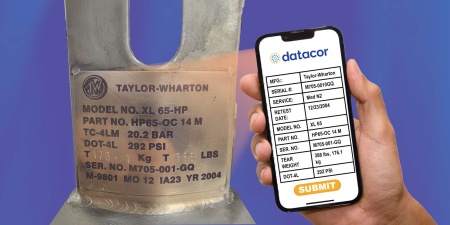by Thomas J. Armitage, site-seeker, inc.
If your business has a physical storefront, there’s a huge opportunity to get in front of more buyers by leveraging your digital properties.
You’ve probably noticed by now, Google’s algorithm and its approach to search have changed dramatically over the years.
It’s gotten smarter and a lot more sophisticated.
For local businesses, that means being able to be found more often by users, but only if positioned properly.
That’s why it’s important to think through your business’s approach to local search engine optimization (SEO) and how you can be found more often for relevant search terms.
Background
Remember Google Places and Google+?
Google went through many changes, tweaks, and updates before it finally got it right with the current Google Maps and Google My Business products.
Google is now able to better understand and better serve users who perform geo-focused (location-based) searches.
Specifically, it looks at the search term, the users’ location (if enabled), and signals from the web to create its ranking order. Naturally, it also distinguishes between ads, map listings, and organic rankings.
Because consumers and buyers search on Google regularly for local or regional information, there are a ton of searches performed each day that your business might be missing out on.
What’s The Potential?
One of our clients – a local car care company – has focused on local SEO for years now.
Why? Because they get more traction on their Google My Business page than their website.
In one month, they had 16,500 Google listing views (6,000 on search and 10,500 on maps) compared to just 800 website visitors.
Why such a difference? Users are satisfied with the information they are finding directly in search via Google My Business.
Name, address, phone number, reviews, photos, recent posts, etc. It’s what consumers need to help make a decision if they want to do business with them. In this case, the website is less important. The discrepancy in stats proves it.
Here’s another case.
Our software partner, Yext, which we use to help manage local listings, provided us with these stats.
In one service industry alone, there were 4.6 million impressions in Google Maps, and 2.66 million impressions in Google search. Among those business listings, there were 77,600 “Get Direction” clicks, 205,000 phone calls, and 189,000 website clicks.
Those stats are shared among 668 dealer locations in just a 30-day period.
The potential exposure and traffic can’t be overlooked.
It’s time to get things right.
5 Steps Towards Building a Stronger Local Presence
Pretend it’s 1985.
The market landscape was very different then. As a business, your formula for success was purely analog. A typical go-to-market strategy would have consisted of:
- Storefront signage
- Signs pointing folks to the right place
- Local radio and TV ads
- Community events and sponsorships
- And last, but certainly not least, yellow page listings
Although most publishers have killed off their yellow page books, a few are still in print today. In fact, I received one last week.
It worked really well holding down my garbage bag!
Today, the yellow pages have been replaced by digital marketing. In particular, local SEO.
Local search is a wonderful tactic because – although it comes at a cost in terms of time and labor – there are no direct advertising fees, it’s appropriate for any local business regardless of size, and it’s measurable.
If you’re looking to improve your local search presence, get more visibility among buyers, drive more relevant local traffic, and get more conversions, focus on these five areas.
Google My Business
First, set up and optimize your Google My Business page(s).
As one might expect, Google gives its own Google My Business listings preferential treatment in the index, serving those listings higher than other listing sites like Facebook or Yelp.
Claim your profile and complete it with all necessary information. Address, photos, services, website URLs, etc.
You should set up individual pages for each distributor storefront that has a physical address (and manage them all under the same parent brand account).
If you have more than a few, consider using a tool like Yext or the import tool, which allows for bulk changes or updates.
In recent years, Google has built out its Insights area too. Keep tabs on how many impressions your listings are getting and how many are converting into phone calls and website clicks.
Citations
How does Google’s algorithm rank its organic listings?
Well, that’s been a mystery for two decades now, but most SEO professionals have a decent understanding – based on research, testing, and the recommended best practices put forth by Google’s search team over the years.
For global/general searches, we know that a website’s metadata, content, backlinks, and domain authority are just a few of the factors that play into the rankings.
At the local level, those same rules apply, but it takes into consideration a few additional elements, too. That includes the users’ location, Google My Business information, as well as how well the business is optimized across the web for NAP (name, address, phone number).
Google scours the web for this information, so it’s best for it to be both present and accurate.
There are more than 50 citation sites out there that it looks at. Amazon Alexa, MapQuest, EZLocal, Citysearch, and 123local are just a few. One could manage these listings and this information manually (which would take a while!) or use a third-party tool – like Yext – to manage in bulk from a central spot.
Not only that, but Yext can help suppress inaccurate information that’s been submitted to the sites from users and remove duplicate listings to keep your web presence accurate at all times.
Optimized Local Pages
Local listings feature great information about your business.
They can provide – directly in search – the info that users are looking for without the need to click through to your website.
But that doesn’t make your website any less important.
Not only does your website provide MORE information and the ability for users to convert in different ways (watch videos, download PDFs, review spec sheets and other product info, fill out a form, etc.), but local listing sites are LINKED to your website.
They don’t compete against each other, but rather, they complement each other.
It’s best to have a well-optimized website to go along with your local listing efforts.
Make sure you have local pages built out for your individual locations – featuring photos, address, phone – and ensure your site is optimized around your local areas and local search terms.
Reviews
Reviews play a dual role.
First, there’s certainly an argument to be made about reviews being used as a Google ranking signal. How much weight do they carry? It’s hard to say exactly, considering sometimes a business with 20 reviews outranks a business with 40. But marketers are confident that they do act as a search signal, so it’s important to have reviews and ensure they are positive.
Second, and more importantly, reviews help provide wonderful credibility and allow users to read about your business before they buy. If you’re a great organization, those reviews will be positive and only do you favors in generating referral business.
Set up a reviews program.
Make sure auto emails or auto texts are sent to customers immediately after doing business with you, asking for a review, with direct links to your Google My Business page.
Also, make sure your sales or customer service reps are asking for reviews following a positive experience. This can go a long way.
Backlinks
Finally, just like a global search, Google will look at a website’s backlink profile.
This is made up of links that are directed to your website. Larger, more well-known sites typically have more backlinks, which indicates a richer presence.
Build your backlink profile and keep other local websites in mind as ones that should link to you.
Use tactics like direct outreach (i.e., ASK!), public and media relations, sponsorships, and content marketing to help generate links.
Remember that it’s more about quality than quantity.
If you’re actively seeking out links, focus on trusted, reputable websites rather than cheap, spammy sites. A link from an area college (.edu) or a local news site will carry A LOT more weight than a random irrelevant blog.
Finally, don’t pay for backlinks. This could have a negative effect on your site, and you run the risk of Google pulling your site out of the index completely.
Summary
Local SEO isn’t a new game. But the rules have certainly changed in recent years.
Google My Business, local pages, and local reviews all need to work together to help allow your prospects to more easily find your digital properties when they are in the midst of their buying journey.
Take these tactics into consideration and decide whether or not a third-party local listing tool would be in your best interest.
If you need any support, make sure to reach out for help!








